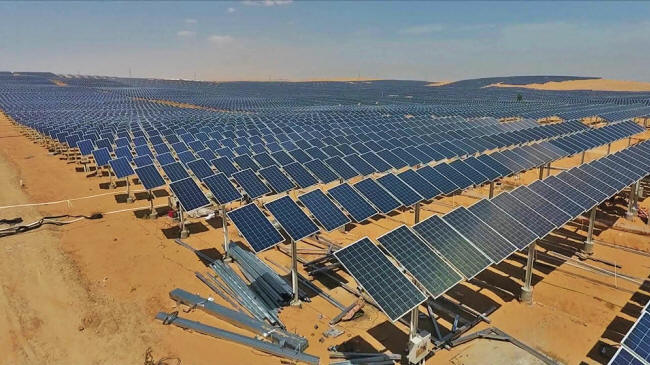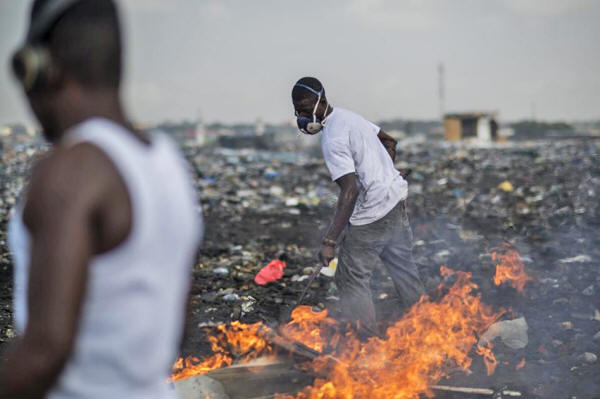|
from
MichaelShellenberger Website
50 times more Waste and cost 4 times more than Predicted, 'New Harvard Business Review Study' finds...
Three years ago I published a long article at Forbes arguing that solar panels weren't clean but in fact produced 300 times more toxic waste than high-level nuclear waste.
But in contrast to nuclear waste, which is safely stored and never hurts anyone, solar panel waste risks exposing poor trash-pickers in sub-Saharan Africa.
The reason was because it was so much cheaper to make new solar panels from raw materials than to recycle them, and would remain that way, given labor and energy costs.
My reporting was near-universally denounced. The most influential financial analyst of the solar industry called my article,
An energy analyst who is both pro-nuclear and pro-solar agreed with her, saying,
The Guardian said solar panel waste was a,
But when reporters eventually looked into the issue they came to the same conclusions I had.
In 2019, The New York Times published a long article about toxic old solar panels and batteries causing "harm to people who scavenge recyclable materials by hand" in poor African communities.
In 2020, Discover magazine confirmed that,
Still, each of those articles stressed that some solar panels were already being recycled, and that more of them one day would be, which was what many of my original critics had pointed out.
The solar analyst who accused me of making unsubstantiated claims said the reason,
But a major new study of the economics of solar, published in Harvard Business Review (HBR), finds that the waste produced by solar panels will make electricity from solar panels four times more expensive than the world's leading energy analysts thought.
Solar's Dark Side
Conventional wisdom today holds that the world will quadruple the number of solar panels in the world over the next decade.
But the volume of solar panel waste will destroy the economics of solar even with the subsidies, they say.
The solar industry, and even supposedly neutral energy agencies, grossly underestimated how much waste solar panels would produce.
The HBR authors, all of whom are business school professors, looked at the economics from the point of view of the customer, and past trends, and calculated that customers would replace panels far sooner than every 30 years, as the industry assumes.
The HBR authors found that the price of panels, the amount solar panel owners are paid by the local electric company, and sunlight-to-electricity efficiency determined how quickly people replaced their panels.
What about recycling?
It's not worth the expense, note the HBR authors.
As a result, it costs 10 to 30 times more to recycle than to send panels to the landfill.
The problem is the sheer quantity of the hazardous waste, which far exceeds the waste produced by iPhones, laptops, and other electronics.
The volume of waste expected from the solar industry, found a team of Indian researchers in 2020, was far higher than from other electronics.
It's not just solar.
But the toxic nature of solar panels makes their environmental impacts worse than just the quantity of waste.
Solar panels are delicate and break easily. When they do, they instantly become hazardous, and classified as such, due to their heavy metal contents.
Hence, used solar panels are classified as hazardous waste.
The authors note that,
Beyond the shocking nature of the finding itself is what it says about the integrity and credibility of IRENA, the International Renewable Energy Agency.
It is an intergovernmental organization like the Intergovernmental Panel on Climate Change (IPCC), funded by taxpayers from the developed nations of Europe, North America, and Asia, and expected to provide objective information.
Instead, it employed unrealistic assumptions to produce results more supportive of solar panels.
IRENA acted like an industry association rather than as a public interest one.
IRENA, noted the HBR reporters,
IRENA almost certainly knew better.
For decades, consumers in Germany, California, Japan and other major member nations of IRENA, have been replacing solar panels just 10 or 15 years old. But IRENA hadn't even modeled solar panel replacements in those time frames.
IRENA wasn't the only organization that put out rose-tinted forecasts to greenwash solar.
For years, the solar industry and its spokespersons have claimed that panels only "degrade" - reduce how much electricity they produce - at a rate of 0.5% per year.
But new research finds that solar panels in use degrade twice as fast as the industry claimed.
And that report came on the heels of a separate report which found that solar panels have been suffering a rising failure rate even before entering service.
Blinded by the Light
Dealing with the problem requires that government regulators clamp down on solar.
But that's unlikely since such legislation would significantly increase the cost of solar, and thin profit margins mean that many solar companies would likely go bankrupt.
The result is a self-reinforcing feedback loop.
As such, taxpayers will likely have to subsidize the clean up of solar panel waste.
None of this means there's no role whatsoever for solar panels, nor that they are not ingenious machines.
Like many others I have long been filled by a sense of wonder in how they convert sunlight, photons, into electrons, and I have solar panels in my backyard.
Solar panels power satellites. And they can be an important way to generate electricity in off-grid areas.
But solar panels cannot be a primary energy source like nuclear, natural gas, or coal, for inherently physical reasons relating to the unreliable and dilute nature of their "fuel," sunlight.
Low power densities must induce higher material intensity and spatial requirements, and thus higher physical costs.
Even as the cost of solar panels has come down, the cost of producing reliable grid electricity with solar panels has risen, due to their weather-dependent nature, something that became evident in 2018, was recognized by University of Chicago economists in 2019, and was further supported by spiraling costs in renewables-heavy Germany and California in 2020.
The new research on the coming solar waste crisis, along with rising blackouts from renewables, reinforces,
Over-relying on solar panels, and underestimating the need for nuclear and natural gas, resulted in California's blackouts last summer.
It's now clear that China made solar appear cheap with coal, subsidies, and forced labor.
And in the U.S., we pay one-quarter of solar's costs through taxes and often much more in subsidies at the state and local level.
And none of this even addresses the biggest threat facing solar power today, which are revelations that perhaps both key raw materials and the panels themselves are being made by forced labor in Xinjiang province in China.
The subsidies that China gave solar panel makers had a purpose beyond bankrupting solar companies in the U.S. and Europe.
The subsidies also enticed solar panel makers to participate in the repression of the Uyghur Muslim population, including using tactics that the US and German governments have called "genocide."
Today, many companies, including Facebook, Google, and Microsoft, buy immense quantities of solar panels with no awareness of their impact.
The Guardian reporter claimed,
The idea that humankind should turn our gaze away from urgent problems like,
...because they complicate longer-term concerns, is precisely the kind of unsustainable thinking that allowed the world to become dependent on toxic solar genocide panels in the first place...
|




